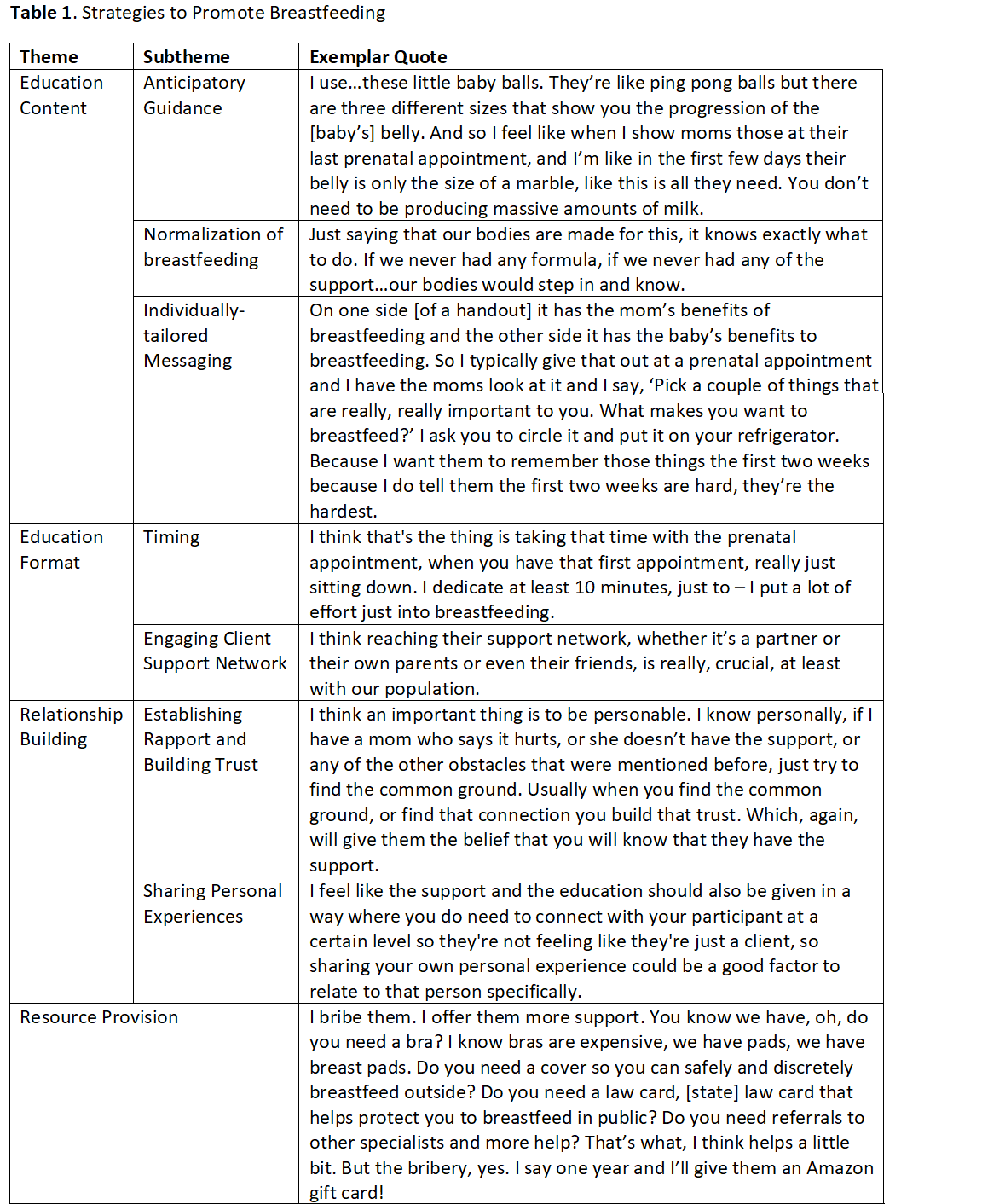Breastfeeding/Human Milk
Session: Breastfeeding/Human Milk 1: Breastfeeding
467 - Using Perspectives of WIC Staff to Improve Breastfeeding Rates among Clients
Sunday, May 5, 2024
3:30 PM - 6:00 PM ET
Poster Number: 467
Publication Number: 467.1891
Publication Number: 467.1891

Bryanne N. Colvin, MD
Assistant Professor of Pediatrics
Washington University in St. Louis School of Medicine
Saint Louis, Missouri, United States
Presenting Author(s)
Background: Mothers who qualify for WIC have lower rates of any and exclusive breastfeeding. WIC staff are trusted sources of advice for clients and can provide helpful information to design effective interventions to increase breastfeeding in this higher-risk population.
Objective: As part of development of an effective intervention to improve breastfeeding rates for WIC clients, the objective of this study is to understand facilitators and barriers to breastfeeding from the perspective of WIC staff, and to learn strategies they use to improve their clients’ breastfeeding rates.
Design/Methods: We conducted focus groups with WIC staff in Massachusetts and Virginia to identify strategies WIC staff use to encourage and support breastfeeding by leveraging facilitators and overcoming barriers to inform the development of a breastfeeding intervention. Data collection and analysis followed an iterative process using constant comparison by a diverse group of researchers with expertise in qualitative methods. Focus groups were continued until thematic saturation was reached.
Results: 51 WIC staff members participated across 7 focus groups. Themes related to strategies used to promote breastfeeding included providing education, with subthemes relating to anticipatory guidance, normalization of breastfeeding, and the importance of tailored messaging; education format, with subthemes regarding timing of education and engagement of support networks; relationship building, including subthemes of establishing rapport and sharing personal experiences; and resource provision. Themes and exemplary quotes are found in Table 1.
Conclusion(s): WIC staff identified the importance of providing specific, concrete information about breastfeeding; strategies to breastfeed while working and caring for other children; the importance of connecting with clients to build trust; and increasing social support for breastfeeding clients. This valuable insight from professionals in the field will guide development of a breastfeeding intervention.

